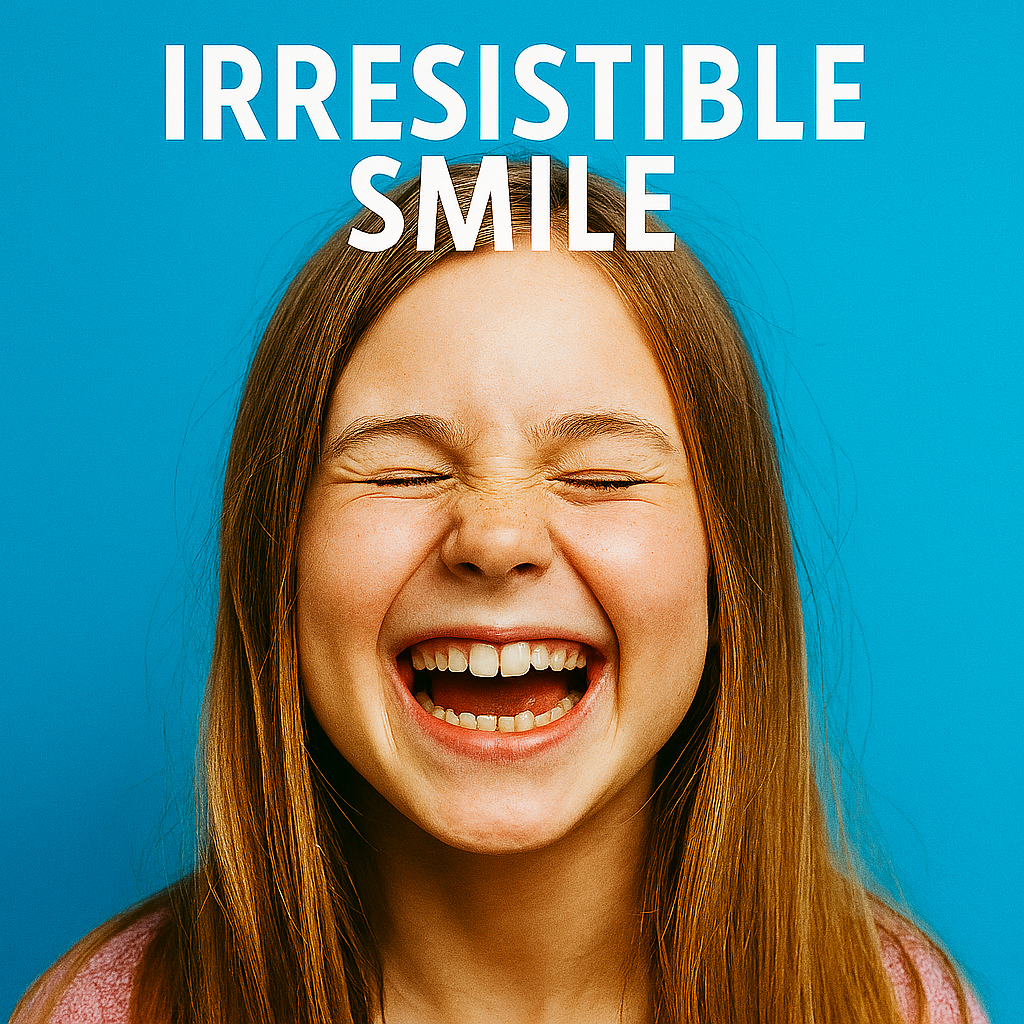
The Power Of Smiling Or A Smile
A Catalyst For Emotional Recovery
The Power Of Smiling – Why Smiling Is More Than Just A Gesture
Smiling is often dismissed as a simple facial expression, but its impact reaches far deeper into our biology, psychology, and social dynamics. A smile can alter the trajectory of a conversation, diffuse tension, and even improve your physical health. It is a universal signal of warmth, trust, and openness, transcending language and culture. Scientific studies have shown that smiling activates neural pathways associated with happiness and reward. It reduces stress hormones like cortisol and increases feel-good chemicals such as dopamine and endorphins. Smiling also influences how others perceive us, often making us appear more approachable, competent, and trustworthy. In professional settings, a genuine smile can enhance collaboration and leadership presence. In personal relationships, it fosters emotional intimacy and resilience. Smiling is not just reactive—it can be proactive, shifting your mood even when you don’t feel joyful. This phenomenon, known as facial feedback, suggests that the act of smiling itself can trigger emotional change. Whether spontaneous or intentional, smiling is a tool for emotional regulation and social connection. It is also linked to longevity, with studies indicating that people who smile more tend to live longer. Smiling can strengthen your immune system, lower blood pressure, and improve cardiovascular health. It is a form of nonverbal communication that signals safety and empathy. In children, smiling plays a crucial role in early bonding and cognitive development. In adults, it can be a strategic asset in negotiation and conflict resolution. Smiling is contagious, often prompting others to smile back, creating a ripple effect of positivity. It is a silent language of kindness, capable of transforming environments and relationships. The power of smiling lies not just in its emotional resonance but in its physiological and social utility.

Smiling And Brain Chemistry – How A Smile Activates Neurotransmitters
Smiling triggers a cascade of neurochemical reactions that influence mood, cognition, and stress response. When you smile, your brain releases dopamine, serotonin, and endorphins—neurotransmitters associated with pleasure and relaxation. These chemicals reduce anxiety and elevate mood, even if the smile is forced. The facial feedback hypothesis suggests that muscle movements involved in smiling send signals to the brain that reinforce emotional states. Smiling also reduces cortisol levels, which helps mitigate the effects of chronic stress. This biochemical shift can improve focus, memory, and decision-making. Smiling activates the orbitofrontal cortex, a region involved in reward processing and social evaluation. It also engages the anterior cingulate cortex, which plays a role in empathy and emotional regulation. These neural activations contribute to a sense of well-being and social attunement. Smiling can enhance neuroplasticity, making the brain more adaptable to change. It supports resilience by reinforcing positive emotional circuits. In therapeutic contexts, smiling is used in behavioral interventions to counter depressive symptoms. The act of smiling can also influence pain perception, making discomfort more tolerable. It is a natural analgesic, reducing the intensity of physical and emotional pain. Smiling improves sleep quality by lowering arousal levels before bedtime. It can also enhance creativity by promoting relaxed attentional states. The neurochemical effects of smiling are cumulative, meaning regular smiling can lead to long-term emotional benefits. Smiling is a form of embodied cognition, where physical actions shape mental states. It is a gateway to emotional regulation and cognitive clarity. The brain interprets smiling as a signal of safety, reducing threat perception. This shift in neural processing fosters openness and curiosity. Smiling is not just a reaction—it is a neurological strategy for emotional optimization.
Table – Neurochemical Effects Of Smiling
| Neurotransmitter | Effect On Mood | Triggered By Smiling |
|---|---|---|
| Dopamine | Pleasure | Yes |
| Serotonin | Calmness | Yes |
| Endorphins | Pain Relief | Yes |
| Cortisol | Stress | Reduced |
| Oxytocin | Bonding | Sometimes |
Power Of Smiling Functions
Smiling And Immune Function – Boosting Health Through Expression
Smiling has a measurable impact on immune function, enhancing the body’s ability to fight illness. When you smile, your body enters a parasympathetic state, which promotes rest and recovery. This shift reduces inflammation and supports cellular repair. Smiling increases the production of immunoglobulin A, an antibody that protects against respiratory infections. It also boosts natural killer cell activity, which helps eliminate virus-infected cells. The reduction in stress hormones like cortisol further supports immune resilience. Chronic stress suppresses immune function, but smiling counteracts this effect. Smiling improves lymphatic circulation, aiding detoxification and nutrient delivery. It also enhances oxygen intake, which supports cellular metabolism. Smiling promotes better sleep, which is essential for immune regulation. It reduces sympathetic nervous system activation, lowering blood pressure and heart rate. These physiological changes create an environment conducive to healing. Smiling can also influence gut health by reducing stress-related digestive issues. The gut-brain axis responds positively to emotional cues, and smiling sends signals of safety. Smiling supports hormonal balance, which is critical for immune coordination. It can also reduce the severity of autoimmune responses by calming inflammatory pathways. Smiling is a behavioral immune booster, accessible and effective. It complements other health practices like nutrition and exercise. In clinical settings, smiling is associated with faster recovery and improved patient outcomes. It is a non-invasive intervention with wide-ranging benefits. Smiling also improves adherence to health routines by enhancing mood and motivation. It is a form of emotional hygiene that supports physical resilience. Smiling is not just a social gesture—it is a biological strategy for health optimization.
Table – Immune Benefits Of Smiling
| Immune Marker | Effect Of Smiling |
|---|---|
| Immunoglobulin A | Increased |
| Natural Killer Cells | Activated |
| Cortisol | Decreased |
| Inflammation | Reduced |
| Sleep Quality | Improved |
Smiling And Cardiovascular Health – A Natural Ally For The Heart
Smiling exerts a calming influence on the cardiovascular system, reducing blood pressure and heart rate through parasympathetic activation. When you smile, your body shifts from a stress-dominant state to one of relaxation and repair. This transition lowers systemic inflammation, a key contributor to heart disease. Smiling also improves vascular function by enhancing endothelial responsiveness. The endothelium, which lines blood vessels, plays a critical role in regulating blood flow and clotting. Smiling promotes nitric oxide release, which dilates blood vessels and improves circulation. Smiling supports heart rate variability, a marker of cardiovascular resilience. High variability indicates better adaptability to stress and lower risk of arrhythmias. Smiling can also reduce the frequency of stress-induced cardiac events. In patients with hypertension, smiling has been shown to lower systolic and diastolic pressure. It complements lifestyle interventions such as diet and exercise. Smiling improves adherence to heart-healthy routines by enhancing mood and motivation. It also reduces the physiological impact of negative emotions like anger and anxiety, which are linked to cardiac risk. Smiling is a behavioral buffer against emotional triggers that elevate heart rate and blood pressure. It fosters emotional regulation, which is essential for cardiovascular stability. Smiling also enhances sleep quality, which supports nocturnal blood pressure regulation. It reduces nighttime arousals and promotes deeper sleep stages. Smiling is a non-pharmacological intervention with measurable cardiac benefits. It is accessible, cost-free, and universally applicable. In cardiac rehabilitation, smiling is used to foster optimism and engagement. It improves patient outcomes and reduces hospital readmission rates. Smiling is not just a sign of happiness—it is a signal of cardiovascular health.
Table – Cardiovascular Effects Of Smiling
| Cardiovascular Marker | Effect Of Smiling |
|---|---|
| Blood Pressure | Lowered |
| Heart Rate | Reduced |
| Nitric Oxide | Increased |
| Endothelial Function | Improved |
| Heart Rate Variability | Enhanced |
Smile
Smiling And Social Bonding – Building Trust And Connection
Smiling is a cornerstone of social bonding, signaling warmth, safety, and empathy. It is one of the earliest forms of communication, appearing in infants before verbal language. Smiling fosters trust by activating mirror neurons in observers, prompting reciprocal emotional responses. It creates a sense of shared experience and emotional resonance. Smiling reduces social anxiety by signaling openness and reducing perceived threat. It enhances interpersonal synchrony, aligning emotional states between individuals. Smiling is a nonverbal cue that facilitates cooperation and collaboration. In group settings, smiling promotes cohesion and reduces conflict. It is used in negotiation to signal goodwill and reduce defensiveness. Smiling also enhances leadership presence, making leaders appear more approachable and competent. It fosters psychological safety, encouraging team members to share ideas and feedback. Smiling is a tool for emotional contagion, spreading positive affect throughout social networks. It strengthens relationships by reinforcing positive interactions. In romantic contexts, smiling enhances intimacy and emotional attunement. It signals affection and receptivity. In parenting, smiling supports attachment and cognitive development. It helps children regulate emotions and build social skills. Smiling is also used in caregiving to convey compassion and reassurance. It reduces patient anxiety and improves therapeutic alliance. Smiling is a universal signal of social inclusion. It transcends language and cultural barriers. It is used in diplomacy to foster rapport and reduce tension. Smiling is a strategic asset in customer service, enhancing satisfaction and loyalty. It is a silent language of kindness and connection. Smiling builds bridges between individuals, communities, and cultures. It is a social catalyst that transforms interactions and relationships.
Table – Social Functions Of Smiling
| Social Context | Role Of Smiling |
|---|---|
| Parenting | Attachment and bonding |
| Leadership | Approachability |
| Negotiation | Goodwill and trust |
| Friendship | Emotional resonance |
| Healthcare | Compassion and comfort |
Smiling And Pain Perception – A Natural Analgesic
Smiling alters the perception of pain by modulating neural pathways involved in nociception. It activates the brain’s reward system, which competes with pain signals for neural attention. Smiling increases endorphin levels, which are natural opioids that reduce pain intensity. It also enhances dopamine release, which improves mood and distracts from discomfort. Smiling reduces the activation of the amygdala, a brain region involved in fear and pain processing. This shift lowers emotional reactivity to pain stimuli. Smiling engages the prefrontal cortex, which supports cognitive reappraisal and pain regulation. It fosters a sense of control and resilience. Smiling also reduces muscle tension, which can exacerbate pain. It promotes relaxation and parasympathetic activation. In clinical settings, smiling is used in pain management protocols to improve patient outcomes. It enhances the effectiveness of analgesics and reduces the need for medication. Smiling improves tolerance to chronic pain by shifting emotional focus. It supports coping strategies and reduces catastrophizing. Smiling is a behavioral intervention that complements physical therapies. It improves adherence and motivation. Smiling also enhances placebo responses, increasing the perceived effectiveness of treatments. It is a psychological amplifier of healing. Smiling reduces anticipatory anxiety, which can intensify pain perception. It fosters optimism and emotional stability. Smiling is used in pediatric care to reduce procedural distress. It is also effective in elder care, improving comfort and emotional well-being. Smiling is a non-invasive, cost-free tool for pain modulation. It is accessible and universally applicable. Smiling transforms the experience of pain by altering its emotional and cognitive context.
Table – Pain Modulation Through Smiling
| Pain Mechanism | Effect Of Smiling |
|---|---|
| Endorphin Release | Increased |
| Amygdala Activation | Reduced |
| Muscle Tension | Decreased |
| Dopamine Levels | Elevated |
| Pain Tolerance | Improved |

Smiling And Emotional Resilience – Strengthening Inner Stability
Smiling is a tool for emotional resilience, helping individuals navigate stress and adversity with greater stability. It activates neural circuits associated with positive affect and emotional regulation. Smiling reduces the intensity of negative emotions by shifting attentional focus. It fosters cognitive flexibility, allowing for adaptive responses to challenges. Smiling supports reappraisal strategies, reframing stressful situations in a more positive light. It enhances self-efficacy, the belief in one’s ability to cope. Smiling reduces rumination, which is linked to depression and anxiety. It promotes emotional clarity and perspective. Smiling also improves interpersonal support by signaling openness and receptivity. It strengthens social networks, which are critical for resilience. Smiling fosters optimism, a key predictor of psychological well-being. It supports goal-directed behavior and motivation. Smiling enhances emotional granularity, the ability to differentiate and articulate feelings. This skill improves emotional regulation and decision-making. Smiling is used in therapeutic settings to build rapport and reinforce progress. It is a marker of emotional engagement and recovery. Smiling supports mindfulness by anchoring attention in the present moment. It reduces emotional reactivity and promotes acceptance. Smiling is a behavioral cue for self-compassion and kindness. It fosters inner dialogue that is supportive rather than critical. Smiling enhances emotional literacy, the ability to understand and express emotions. It is a gateway to psychological growth and healing. Smiling is not just a reaction—it is a resilience strategy. It transforms emotional landscapes and strengthens inner stability.
Table – Emotional Resilience And Smiling
| Resilience Factor | Role Of Smiling |
|---|---|
| Cognitive Flexibility | Enhanced |
| Self-Efficacy | Strengthened |
| Rumination | Reduced |
| Optimism | Increased |
| Emotional Literacy | Improved |
Smiling And Leadership Presence – Commanding Respect With Warmth
Smiling is a strategic tool in leadership, signaling confidence, approachability, and emotional intelligence. Leaders who smile are perceived as more trustworthy and competent. Smiling fosters psychological safety, encouraging team members to share ideas and concerns. It reduces hierarchical tension and promotes inclusive dialogue. Smiling enhances charisma, making leaders more memorable and influential. It supports nonverbal communication, reinforcing verbal messages with emotional clarity. Smiling also improves conflict resolution by signaling openness and empathy. It reduces defensiveness and fosters collaborative problem-solving. In high-stakes environments, smiling can diffuse stress and maintain morale. It is a stabilizing force during uncertainty. Smiling supports executive presence, balancing authority with warmth. It enhances public speaking by engaging audiences and reinforcing key messages. Smiling also improves negotiation outcomes by building rapport and reducing resistance. It is a signal of strategic goodwill. Smiling fosters team cohesion, aligning emotional tone across diverse personalities. It supports mentorship by creating a safe space for growth. Smiling is a leadership asset that transcends industry and culture. It is used in diplomacy, education, healthcare, and entrepreneurship. Smiling enhances adaptability, helping leaders navigate change with resilience. It is a behavioral cue for optimism and vision. Smiling strengthens relational capital, the emotional currency of effective leadership. It is not just a gesture—it is a leadership strategy.
Table – Leadership Benefits Of Smiling
| Leadership Domain | Impact Of Smiling |
|---|---|
| Trust Building | Enhanced |
| Conflict Resolution | Improved |
| Executive Presence | Strengthened |
| Team Cohesion | Fostered |
| Public Speaking | More Engaging |
Emotional Recovery
Smiling And Childhood Development – Building Brains With Joy
Smiling plays a foundational role in childhood development, shaping emotional, cognitive, and social growth. Infants respond to smiles before they understand language, using them to bond and explore. Smiling activates neural pathways associated with reward and learning. It reinforces positive behavior and emotional regulation. Smiling supports attachment, creating secure relationships with caregivers. It reduces stress and promotes resilience in early life. Smiling also enhances mirror neuron development, supporting empathy and social understanding. It fosters joint attention, a key skill in language acquisition. Smiling improves mood and motivation, encouraging exploration and play. It supports executive function by reducing emotional overload. Smiling is used in early education to build trust and engagement. It enhances classroom dynamics and supports inclusive learning. Smiling also reduces behavioral issues by promoting emotional attunement. It is a tool for emotional scaffolding. Smiling strengthens peer relationships, fostering cooperation and kindness. It supports identity formation by reinforcing positive self-image. Smiling is a developmental catalyst, accelerating emotional literacy and social competence. It is used in pediatric therapy to build rapport and reduce anxiety. Smiling enhances creativity by promoting relaxed attentional states. It is a gateway to curiosity and discovery. Smiling is not just a reaction—it is a developmental strategy.
Table – Developmental Functions Of Smiling In Children
| Developmental Domain | Role Of Smiling |
|---|---|
| Attachment | Secure Bonding |
| Language Acquisition | Joint Attention |
| Emotional Regulation | Reinforced |
| Peer Interaction | Cooperation |
| Creativity | Stimulated |

Smiling And Cultural Symbolism – A Gesture Across Civilizations
Smiling carries rich cultural symbolism, reflecting values, norms, and emotional codes across societies. In some cultures, smiling is a sign of politeness and social harmony. In others, it may signal sincerity or emotional depth. Smiling is used in rituals, greetings, and storytelling. It conveys respect, joy, and spiritual connection. In collectivist cultures, smiling reinforces group cohesion and shared identity. In individualist cultures, it may express personal authenticity and confidence. Smiling is embedded in art, literature, and religious iconography. It symbolizes transcendence, compassion, and divine presence. Smiling also plays a role in cultural diplomacy, bridging linguistic and ideological divides. It is a tool for cross-cultural understanding. Smiling varies in frequency and context across regions. In some societies, smiling at strangers is common; in others, it may be reserved for close relationships. These differences reflect cultural attitudes toward privacy, emotion, and social boundaries. Smiling is also shaped by historical narratives and collective memory. It may symbolize resilience, resistance, or reconciliation. In multicultural settings, smiling fosters inclusion and mutual respect. It is a gesture of welcome and openness. Smiling is used in cultural festivals to express joy and unity. It is a visual language of celebration. Smiling transcends spoken language, offering emotional clarity across borders. It is a symbol of shared humanity. Smiling is not just a gesture—it is a cultural artifact.
Table – Cultural Interpretations Of Smiling
| Culture Type | Meaning Of Smiling |
|---|---|
| Collectivist | Harmony and Unity |
| Individualist | Authenticity and Confidence |
| Religious | Compassion and Grace |
| Diplomatic | Openness and Respect |
| Artistic | Joy and Transcendence |
Smiling And Performance – Enhancing Focus And Flow
Smiling influences performance by optimizing emotional and cognitive states. It reduces stress and enhances focus, supporting task engagement. Smiling activates brain regions involved in motivation and reward. It fosters flow states, where attention and action align seamlessly. Smiling improves working memory and decision-making. It reduces cognitive interference from negative emotions. Smiling also enhances physical performance by reducing muscle tension and improving coordination. It supports endurance by lowering perceived exertion. Smiling is used in sports psychology to regulate arousal and maintain composure. It improves reaction time and strategic thinking. Smiling enhances creativity by promoting relaxed attentional states. It supports divergent thinking and problem-solving. Smiling improves collaboration by fostering emotional synchrony. It enhances group performance in team settings. Smiling also supports resilience during setbacks, maintaining optimism and effort. It is a behavioral cue for perseverance. Smiling improves sleep quality, which supports recovery and performance. It reduces pre-performance anxiety and enhances readiness. Smiling is used in education to support learning and retention. It fosters engagement and curiosity. Smiling enhances public performance by building rapport with audiences. It is a tool for emotional connection. Smiling is not just a mood—it is a performance enhancer.
Table – Performance Benefits Of Smiling
| Performance Domain | Effect Of Smiling |
|---|---|
| Focus | Improved |
| Endurance | Increased |
| Creativity | Enhanced |
| Collaboration | Strengthened |
| Recovery | Accelerated |
Smiling And Aging – A Lifelong Strategy For Vitality
Smiling supports healthy aging by promoting emotional, cognitive, and physical resilience. It reduces stress, which accelerates biological aging. Smiling lowers inflammation and supports cellular repair. It enhances immune function, reducing susceptibility to illness. Smiling improves cardiovascular health, supporting longevity. It also enhances sleep quality, which is critical for aging well. Smiling supports cognitive function by reducing emotional interference. It improves memory and attention. Smiling fosters social engagement, which protects against isolation and cognitive decline. It strengthens relationships and community ties. Smiling enhances mood and reduces depressive symptoms in older adults. It is a behavioral cue for emotional vitality. Smiling supports identity and self-worth, reinforcing positive self-image. It is used in elder care to foster dignity and connection. Smiling improves adherence to health routines by enhancing motivation. It supports physical activity and nutrition. Smiling also enhances creativity and curiosity, which support cognitive flexibility. It is a gateway to lifelong learning. Smiling reduces pain perception and improves comfort. It is a non-invasive intervention for chronic conditions. Smiling fosters optimism, which is linked to longer life expectancy. It is a psychological buffer against aging stressors. Smiling is not just a youthful trait—it is a lifelong strategy.
Table – Aging And Smiling
| Aging Factor | Role Of Smiling |
|---|---|
| Inflammation | Reduced |
| Cognitive Decline | Mitigated |
| Social Isolation | Counteracted |
| Sleep Quality | Improved |
| Emotional Vitality | Strengthened |
Conclusion – Smiling As A Symbol Of Health, Connection, And Strength
Smiling is far more than a fleeting expression—it is a multidimensional force that shapes our biology, psychology, and social reality. It activates neural pathways that enhance mood, reduce stress, and improve cognitive function. It strengthens the immune system, supports cardiovascular health, and modulates pain perception. Smiling fosters emotional resilience, social bonding, and psychological safety. It is a universal signal of kindness, trust, and empathy. Whether spontaneous or intentional, smiling transforms environments and relationships. It is a behavioral strategy for well-being, accessible to all and effective across contexts. Smiling is a silent language of hope and connection. It is a symbol of inner strength and emotional intelligence. In a world often marked by stress and disconnection, smiling is a radical act of presence and compassion. It is a tool for healing, growth, and transformation. The power of smiling lies in its simplicity and depth. It is a reminder that joy is not just felt—it is shared, embodied, and expressed.
Join The Discussion – How Has Smiling Changed Your Day Or Your Relationships?
Smiling is contagious, and your story might inspire someone else to smile more often.
#SmilingPower #EmotionalResilience #NeurobiologyOfJoy #HealthThroughExpression #SmileAndThrive #SymbolicConnection #FacialFeedback #TrustSignals #HealingGestures #SmileScience





I appreciate how genuine your writing feels. Thanks for sharing.